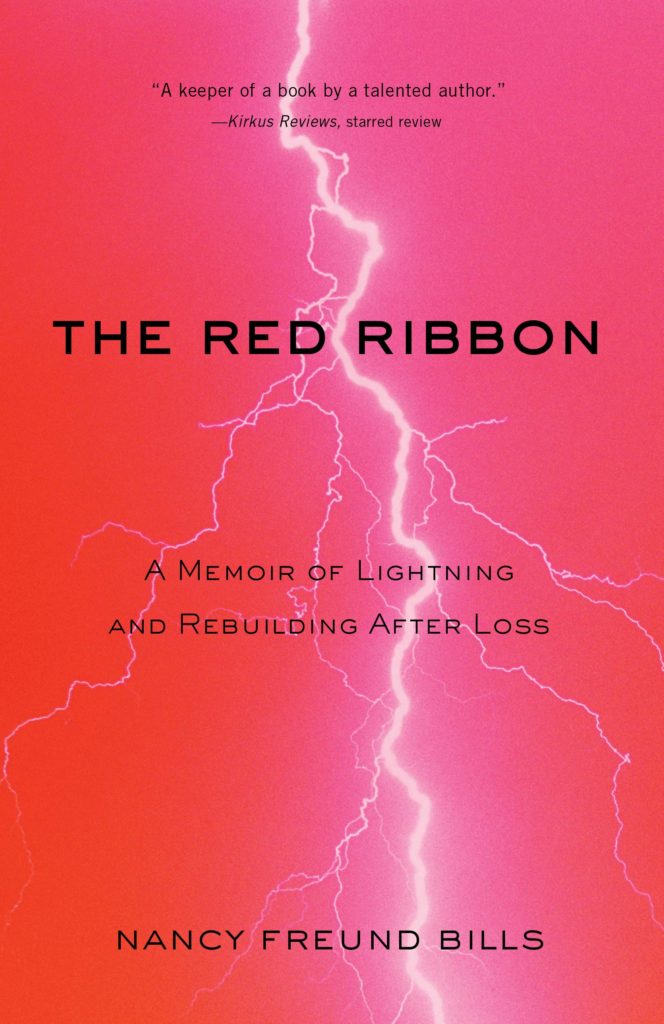 I spent five years teaching memoir workshops to people in a hospice bereavement program. It taught me that dealing with loss can be a powerful focus for the personal storytelling and reflection that are at the heart of memoir. That experience made me eager to read Nancy Freund Bills’ The Red Ribbon: A Memoir of Lightning and Rebuilding After Loss (She Writes Press, May 2019). The book does not disappoint. Readers should not expect a memoir that follows a tight chronology. Instead the book offers a series of episodic chapters, some the equivalent of standalone essays, that chronicle her journey of grief and loss. In choosing this structure, Bills has succeeded in highlighting key points in the grieving process.
I spent five years teaching memoir workshops to people in a hospice bereavement program. It taught me that dealing with loss can be a powerful focus for the personal storytelling and reflection that are at the heart of memoir. That experience made me eager to read Nancy Freund Bills’ The Red Ribbon: A Memoir of Lightning and Rebuilding After Loss (She Writes Press, May 2019). The book does not disappoint. Readers should not expect a memoir that follows a tight chronology. Instead the book offers a series of episodic chapters, some the equivalent of standalone essays, that chronicle her journey of grief and loss. In choosing this structure, Bills has succeeded in highlighting key points in the grieving process.
The memoir’s inciting incident is the death of her estranged husband who is struck by lightning while boating with their youngest son on the southern coast of Maine. Her son is critically injured, leaving Bills fearing for his survival while processing the loss of a spouse she had already left. She writes about the night of the accident and the anguish of the following days with language that is simple but powerful. Scenes written with little embellishment eloquently capture her anguish as she watches the heart monitor and listens to the ventilator in her son’s hospital room. We gain a vivid sense of her emotions as she succumbs to a sudden rush of tears when a nurse gives her tea in the waiting room. Such details bring her loss into sharp focus.
The episodic chapters that follow remind readers that grieving is not a linear journey with a clear beginning, middle and end, but instead is a path that loops back on itself. She writes about a sudden flashback to the accident that is triggered when someone innocently utters the phrase “sometimes lightning strikes” in a writing workshop. In three chapters, she recalls her earliest memories of her late husband when they met while serving in the Air Force. Such recollections are inevitably part of how we grieve. A chapter titled “Escaping Grief’s Kitchen” details a long dream that is symbolic of her grieving process. Both prose and poetry are included in the retelling of the way her subconscious processed the loss. In another chapter, the act of moving her husband’s ashes from the bedroom where Bills now sleeps with her lover reflects her ambivalence about moving on.
In Part 2 of the memoir, called “My Season of Death,” Bills writes other stories of loss, capturing the final days of her sister-in-law, mother-in-law, a friend, her father and mother. These losses—likened on the book’s cover to “the many lightning strikes of life”—are each filled with details of Bills’ relationship to the person who has died.
Throughout her book, Bills does more than recall relationships with nostalgia. She also does some of the most important work we do in memoir: she considers the past through the lens of the present, finding meaning and coming to terms with her life. In a chapter called “Atonement,” she examines past actions that she has come to regret. In another, called “The Myth,” she puts into perspective the version of the story that she has constructed for herself about the accident that took her husband’s life. That chapter is noteworthy as the winner of the memoir/personal essay category of the 83rd Writer’s Digest competition. It is also noteworthy for Bills’ honest self-appraisal of how she has consciously chosen to categorize the loss. This balance of memory and thoughtful introspection makes this a memoir worth reading and one that will surely resonate with those who have struggled with the loss of people they love.


